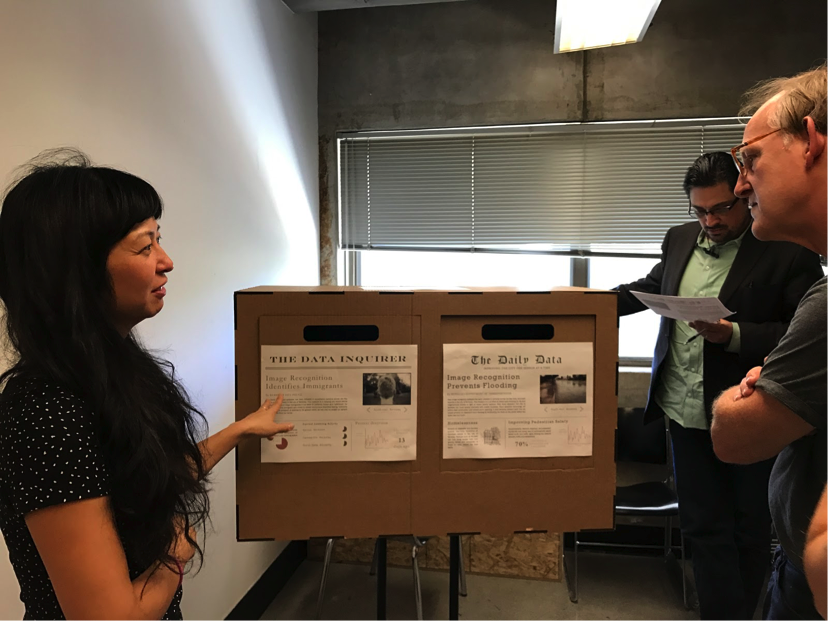Stories of Connected Cities
Submitted by our 2017 ARC Fellow Team:
By Andrea Gagliano and Kimiko Ryokai (School of Information and Berkeley Center for New Media)
Collaborator: Sasha Volkov (School of Information)
In the coming years, the cities we live and breathe in will begin to become more connected and ‘smart’. Street lights will detect us walking down the street and turn on in our presence. Sound intensity and vibration sensors will sense pedestrian and car traffic and alter traffic lights to create safer streets. Cameras combined with image recognition will be able to detect when there is flooding, helping cities better plan road infrastructure. There are numerous benefits of having sensors in cities, including improving the dissemination of city services, reducing environmental impact, and creating a healthier environment for city inhabitants.
But, the data that is collected from these sensors, while open to the public and able to be combined with other data sets, opens up conversations about more politically-contentious efforts that the data could be used for. For example, could cameras use facial recognition to detect immigrants walking on the street to enforce government policies? Could sound intensity sensors be used to detect protest activity?
Our project is to create a physical, interactive installation to exist on the street that passerbys can engage with to learn more about the potential presence and usage of sensors in their city environment. The installation will house actual sensors that will react to the presence, sound, and motion of passerbys.
The goals of the installation are to be more transparent about sensors in city infrastructure. With a more informed public, individuals can be empowered to contribute to conversations amongst advocacy groups, cities, and each other regarding the development of policies that satisfy public good initiatives while also protecting individual privacy in the city environment.
Thanks to the group of ARC Research Fellows, we were able to gather copious amounts of ideas and feedback on our idea and prototype. We envision our installation to take the form of repurposing newspaper boxes. Newspaper boxes currently have minimal use, and are seen by some as an eyesore. So, we took the ARC Research Fellows cohort out into the field to look at newspaper boxes on the street to stimulate conversation and design ideas for the repurposing.
 After the design activity, we showed the cohort a cardboard prototype of our vision and received further feedback.
After the design activity, we showed the cohort a cardboard prototype of our vision and received further feedback.

We are very grateful for the opportunity to be a part of this very interdisciplinary group. In the room was a journalist veteran, artists, architects, and city planners, eliciting vibrant and diverse conversation.
Our installation will be open to the public to be interacted with in late April. Please reach out to andrea.gagliano@berkeley.edu if you’d like to be involved.
Note:Over the course of the spring semester, each 2017 ARC Fellows team will submit a short blog post about their project and findings. We hope you will enjoy these short readings! The Fellows Program advances interdisciplinary research in the arts at UC Berkeley by supporting self-nominated pairs of graduate students and faculty members as they pursue semester-long collaborative projects of their own design. To learn more about the program, click here.
